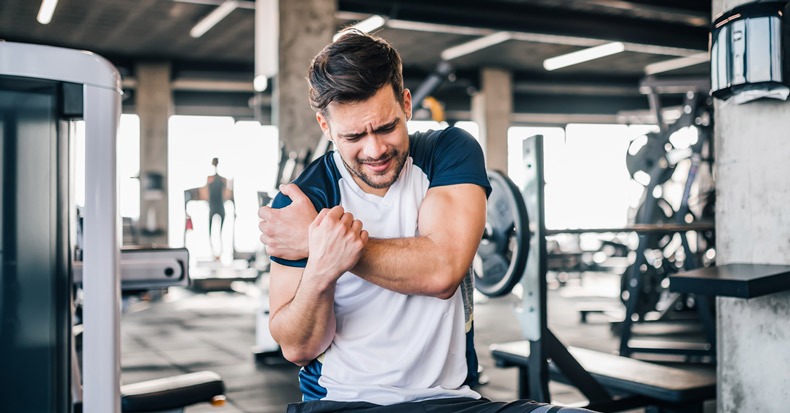Most adults will experience shoulder pain at some point during their lifetime, and it’s estimated that nearly one-third of adults are affected each year. Among the many possible diagnoses, shoulder impingement syndrome accounts for roughly half of all shoulder pain cases. However, current understanding indicates that shoulder impingement syndrome is not a single diagnosis, but […]
Four Reasons Shoulder Injuries Heal So Slowly
Shoulder injuries are a common complaint, affecting approximately 40 out of every 1,000 people each year. While the causes of shoulder pain and dysfunction vary, they all share one frustrating trait: they tend to heal slowly. In fact, many clinical guidelines published around the world recommend longer treatment durations for shoulder complaints compared to other […]
Non-Surgical Management of Frozen Shoulder
Adhesive capsulitis, commonly known as frozen shoulder, is a condition characterized by painful and restricted shoulder movement. It affects approximately 2-5% of the United States population, most frequently in adults aged 40 to 60. The condition develops gradually, beginning with a “freezing” phase in which movement becomes increasingly painful and limited. This stage can last […]
Comprehensive Treatment for Subacromial Pain Syndrome
Shoulder pain is a common complaint that drives patients to a doctor’s office, including chiropractic clinics. It’s estimated that about one-third of the population will experience shoulder pain at some point, with subacromial pain syndrome accounting for approximately two-thirds of these cases. Subacromial pain syndrome arises from issues in the subacromial space, located between the […]
Improving Shoulder Stability
The shoulder complex is comprised of four joints—glenohumeral, acromioclavicular, sternoclavicular, and scapulothoracic—that coordinate with one another so that we can perform numerous activities with our upper extremities. In addition to the aforementioned joints, there are several primary muscles that stabilize the shoulder and allow it to move in its three primary planes: front (anterior), back […]
Hands-On Care for Shoulder Impingement Syndrome
Shoulder impingement syndrome (SIS) is a very common cause of shoulder pain that affects about half of adults at some point in life. Essentially, the condition describes the pinching of pain-sensitive structures in the shoulder that restricts normal use or function, with raising the shoulder being a very common activity that triggers a painful reaction. […]
The Scapula’s Role in Shoulder Function
When a patient seeks care for shoulder pain, they usually point to the ball and socket glenohumeral joint as the source of their problem. However, a contributing cause of the patient’s shoulder pain and disability may actually be the scapula or shoulder blade and if scapular dyskinesis is present and untreated, the patient may not […]
The Multifactorial Problem of Frozen Shoulder
The condition that’s often referred to as frozen shoulder goes by many monikers: adhesive capsulitis, painful stiff shoulder, periarthritis, and idiopathic restriction of shoulder movement. Regardless of the name, frozen shoulder presents itself as a stiff, inflexible, and painful shoulder joint and it often arises in a mysterious way that’s sometimes difficult to trace. The […]
Preventing Shoulder Injuries in Athletes
Shoulder injuries are common in athletes, especially those requiring overhead repetitive movements at high velocity and extreme range of motion. For example, shoulder injuries account for 19% of injuries to baseball players and nearly 40% of injuries to swimmers. Because a shoulder injury can sideline an athlete and even prematurely end their season, a current […]
Suprascapular Nerve-Related Shoulder Pain
The shoulder is a very complex region that is comprised of multiple joints and muscle attachments, a strong joint capsular ligament, and multiple nerves and blood vessels that pass into the arm to bring motor and sensory function to the hand and fingers. One condition of the shoulder that may drive a patient to seek […]
- 1
- 2
- 3
- 4
- Next Page »









